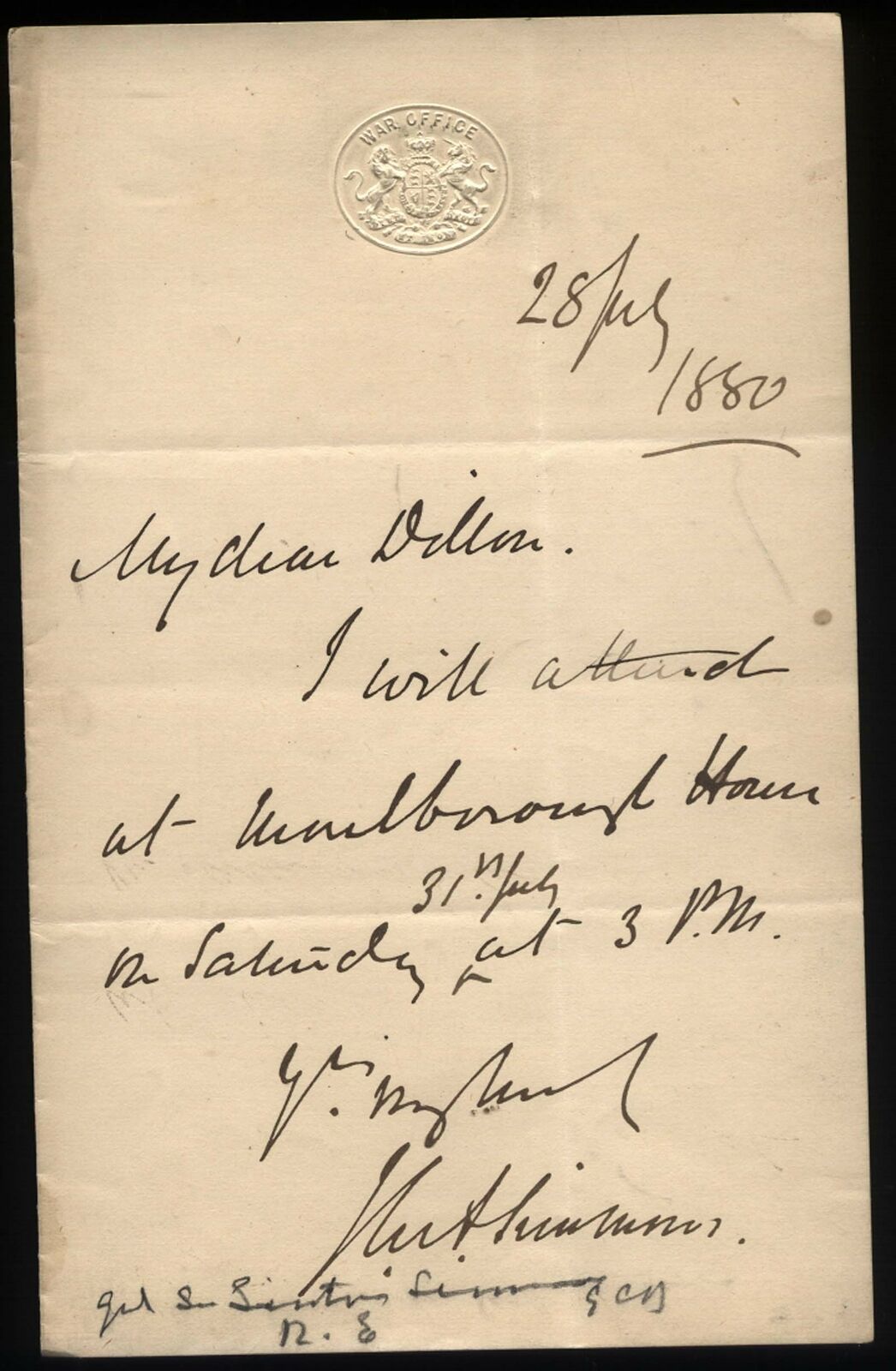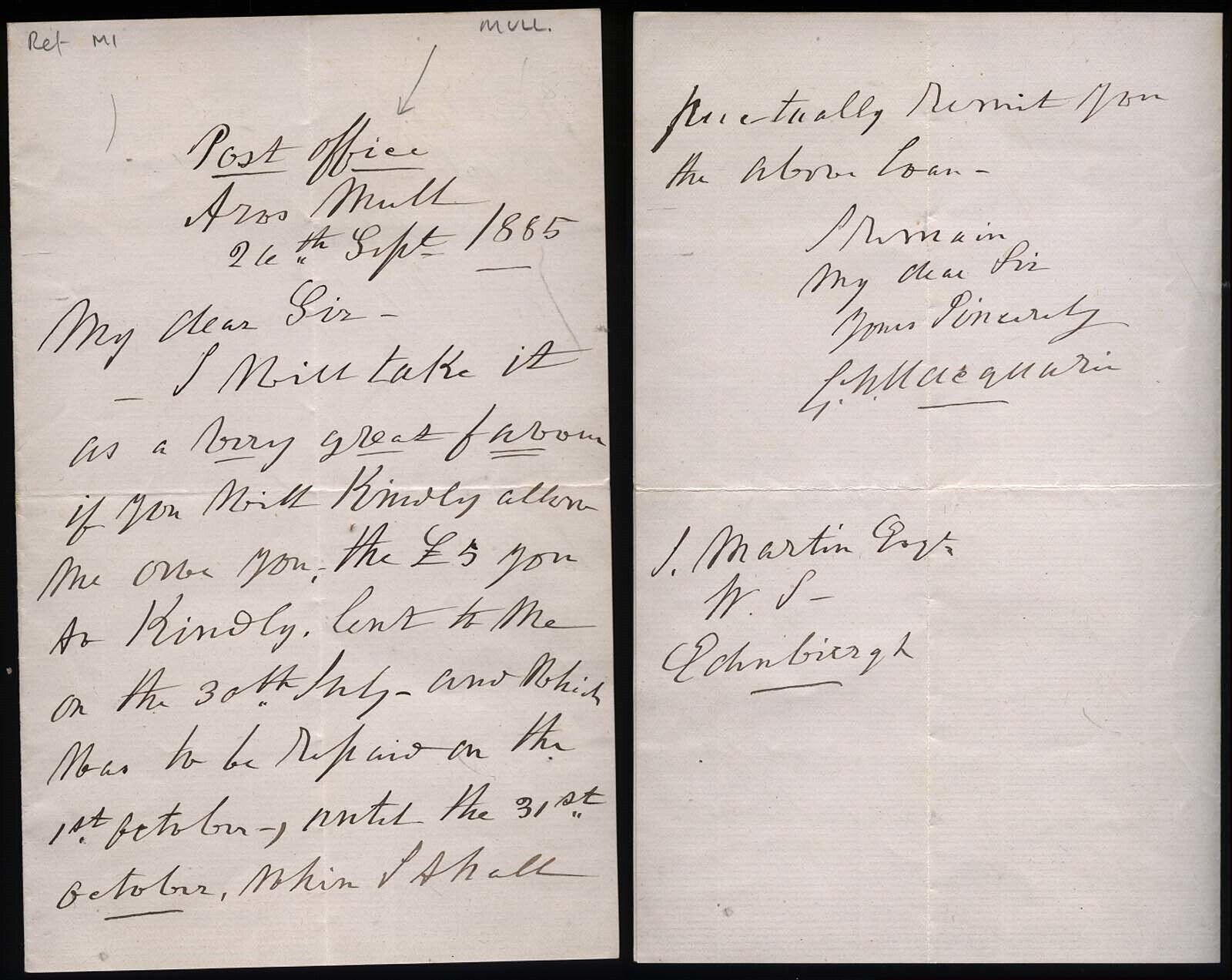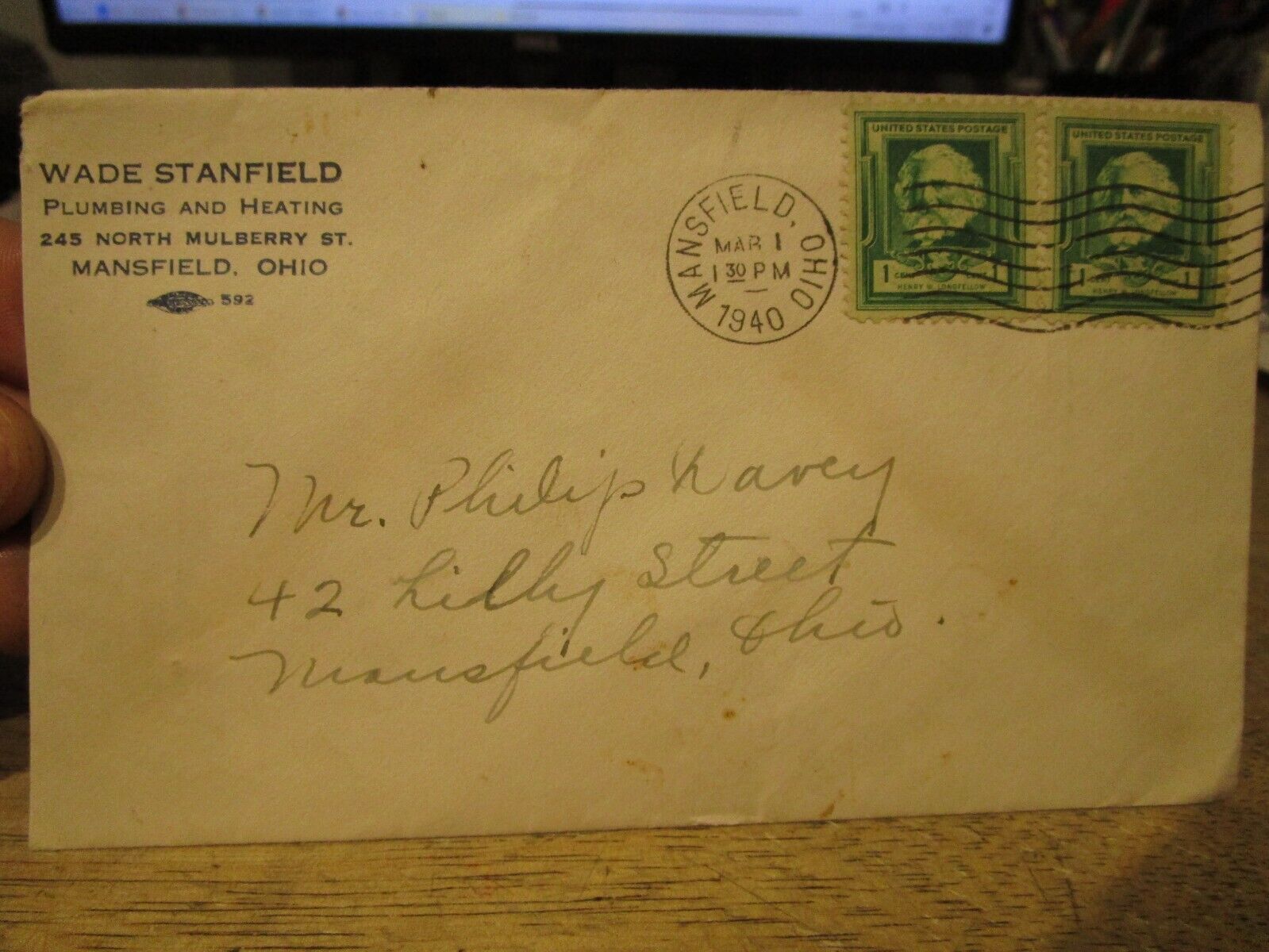-40%
1886 YOTES COURT, Mereworth , 8th Viscount TORRINGTON to General Martin Dillon
$ 95.97
- Description
- Size Guide
Description
1886 YOTES COURT, Mereworth , 8th Viscount TORRINGTON to General Martin DillonThis product data sheet is originally written in English.
George STANLEY Byng, 8th Viscount Torrington (29 April 1841 – 20 October 1889), known as George Byng until 1884, was a British Conservative politician.
Origins
He was the son of Major the Hon. Robert Barlow Palmer Byng (third son of George Byng, 6th Viscount Torrington), by his wife Elizabeth Maria Gwatkin, a daughter of Major-General Edward Gwatkin, a son of Robert Lovell Gwatkin
Career
In 1884 he succeeded his uncle George Byng, 7th Viscount Torrington (1812-1884) in the viscountcy. In 1888 his uncle's companion, Andalusia Molesworth died. She left her fortune to Byng as she was estranged from her ex-husband's family.
Byng served briefly as a Lord-in-waiting (government whip in the House of Lords) from March to October 1889 in the Conservative administration of Lord Salisbury.
Marriages and children
He married twice:
Firstly in 1882 to Alice Arabella (d. 1883), a daughter of James Jameson. Secondly in 1885 to Emmeline Seymour (d. June 1912), a daughter of Rev. Henry Seymour,[3] by whom he had children including: George Master Byng, 9th Viscount Torrington (1886–1944).
Death & succession
He died in office in October 1889, aged 48, and was succeeded in the viscountcy by his son from his second marriage, George Master Byng, 9th Viscount Torrington (1886–1944).
General Sir Martin Andrew Dillon GCB CSI (19 June 1826–1913) was an Irish senior officer in the British Army.
Biography
Dillon was the son of Major Andrew Dillon and entered the British Army in 1843.
He was present as a captain at the Siege of Lucknow during the Indian Mutiny of 1857 and as a major in the subsequent Oudh campaign of 1858. In the China Campaign of 1860 he served as an assistant adjutant-general on the staff of Major-General Sir Robert Napier and as the latter's military secretary in India and Abbysinia. He was Aide-de-Camp to Queen Victoria from 1868 to 1878 when, now promoted Major-general, he was appointed assistant military secretary to Prince George, Duke of Cambridge.
He was knighted as a Knight Commander of the Order of the Bath (KCB) in 1887. Promoted lieutenant-general in 1887 and full general on 16 July 1892, he was given the colonelcy of The Prince of Wales's Own (West Yorkshire Regiment) in 1897, transferring in 1913 to be briefly colonel-commandant of the 1st Battalion of the Rifle Brigade.
Dillon was appointed a Knight Grand Cross of the Order of the Bath (GCB) in the 1902 Coronation Honours list published on 26 June 1902, and was invested by King Edward VII at Buckingham Palace on 8 August 1902
MILITARY SERVICE
Dillon, Gen Sir Martin (Andrew) G.C.C. (1932), K.C.B., (1887), S.I. (1872) Indian Army (retired); b. 1826; entered army, 1843; General, 1892; served in Punjab, 1848-49; Kohat Pass, 1850; Crimea, 1856; Indian Mutiny, 1857-59: China. I860; Abyssinia, 1867-68; Brigade-Major, Nepal Frontier; Assistant, Adjutant-General, China; Military Secretary, Bombay; Military Secretary, Abyssinia. (A.D.C. to the Queen); Military Sec. India; Adj-Gen. Gibraltar; commanded the Lucknow and the Rawalpindi Divisions, India, 1884-88; Col, West Yorkshire Regt. (Prince of Wales Own), 1897, Commissioner, Duke of York’s Royal Military School: Commandant. Rifle Brigade, 1915.
Address: 80, St. Cames Square, S.W. Clubs: United Service.
ARCHIVE MATERIAL FOR Dillon, Sir Martin Andrew (1826-1913) Knight, General is held at
1 1880-96: corresp National Library of Ireland MS 41.682 See Annual Return 2007
2 1890-1901: letters to Earl Roberts National Army Museum Templer Study Centre 7101/23, 8310/155-62 NRA 18656
3 1868-86: corresp British Library: Asian and African Studies MSS Eur F 114 NRA 10012
YOTES COURT
Country house. Built circa 1656-58 for James Master. Red brick with painted plaster quoins and dressings. Hipped plain tiled roof. Central 5-bay block with l-bay wings giving the house a stretched 'H' shape. Wide plinth of coursed stone blocks topped by rubbed brick course. Basement Windows in plinth of centre recess. Flat band and moulded cornice with covered soffit. 7 dormers with some sli- ding casements. Tall brick chimney stacks, 2 bearing dates 1656 and 1658, with sunk arched panels. Raised flat window surrounds with ears, sills and central keystones. Windows on ground-floor of recess were dropped during alterations in the C18. Central window on 1st floor with pediment on brackets. This, and the central projecting corinthian half-columned porch with panelled double-doors, fan-light and cast-iron balcony over, are late C18 additions. Rear elevation with 3 gables in central recess and rear fene- stration showing some survival of the original cross Windows. East elevation of 3 storeys and 6 bays. Irregular fenestration due to unresolved problem of lighting the subsidiary staircase, with 3 Windows on 3 levels in 3rd bay from right. Basement door in 3rd bay from left. Panelled, with top pane cut away and glazed. Deep flat hood on brackets. Interior: Original square open-well staircase with stout Ionesian baluster and heavy rail. Pair of figures in putative niches on east and west walls of stair and ceiling painting of open sky with flying putti with garlands. Surrounded by balu- strade, all c.1740 and attributed to Francis Hayman. Front Hall: Adamesque plaster ceiling and chimney-piece, c.1765. Front Bedroom: Adamesque plaster ceiling and chimney-piece, c.1765. Dining Room: C17 oak panelling. Victoria Room: Mid C18 chimney-piece. South-East Bedroom: Rococo papier mache ceiling, c.1740. See Archaeologia Cantiana, XV-XVIII, 1883-1889, for the transcription by Mrs Dalison of the Account Books of James Masters of the years 1646-76. Country Life, June 18th and 25th, 1964, CXXXV, 1580, 1648. Yotes Court is listed Grade I as a very early example of the type of country house that be- came dominant after the Restoration. As a building of importance and quality of the Commonwealth period it has great rarity value
:
Powered by SixBit's eCommerce Solution
George STANLEY Byng, 8th Viscount Torrington (29 April 1841 – 20 October 1889), known as George Byng until 1884, was a British Conservative politician. OriginsHe was the son of Major the Hon. Robert Barlow Palmer Byng (third son of George Byng, 6th Viscount Torrington), by his wife Elizabeth Maria Gwatkin, a daughter of Major-General Edward Gwatkin, a son of Robert Lovell GwatkinCareerIn 1884 he succeeded his uncle George Byng, 7th Viscount Torrington (1812-1884) in the viscountcy. In 1888 his uncle's companion, Andalusia Molesworth died. She left her fortune to Byng as she was estranged from her ex-husband's family.Byng served briefly as a Lord-in-waiting (government whip in the House of Lords) from March to October 1889 in the Conservative administration of Lord Salisbury.Marriages and c
Type
Historical
EAN
Does Not apply
Country
England
Estate or House name
Yotes Court
England County
Kent
City/Town/Village/Place
Maidstone
Family Surname
Byng
Era
1881-1890
Addressed to
Sir Martin Dillon
Document Type
Manuscript Letter
Year of Issue
1886
Titled Families
8th Viscount Torrington









